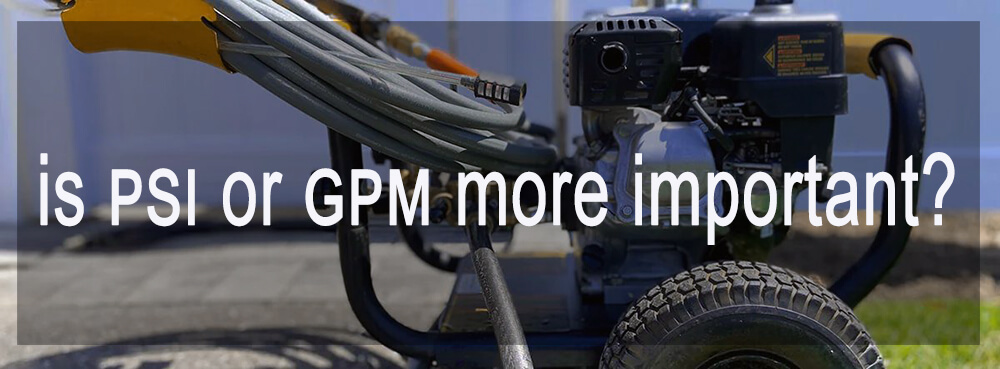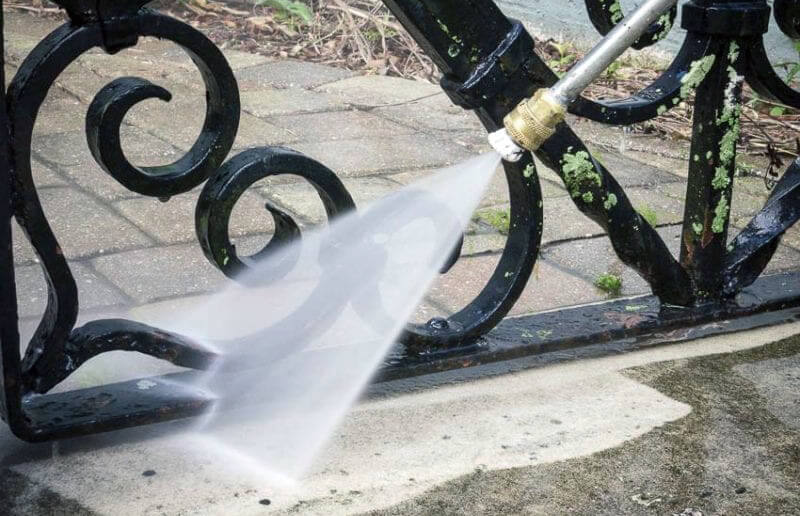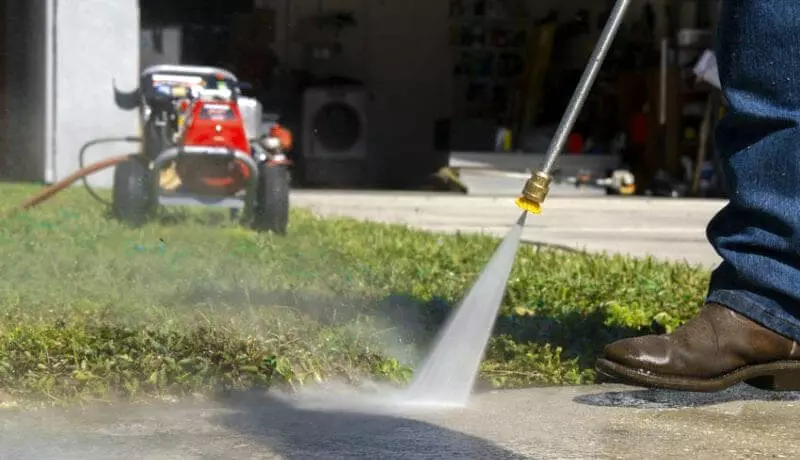20Dec 2023
table of contents

In the dynamic world of cleaning applications, pressure washers are indispensable tools that can transform mundane tasks into efficient and thorough ones. Whether you're treating a dirty surface or cleaning an outdoor space, a pressure washer's effectiveness depends on two key metrics: PSI (pounds per square inch) and GPM (gallons per minute). These indicators are the guiding force of the machine's performance and determine its ability to accurately remove dirt.
But which one of them should you prioritize? Is the concentrated power of high PSI levels the ultimate consideration, or does the fast flushing capability conferred by higher GPM rates take precedence?
In this article, we'll begin to uncover the importance of these metrics and explore their respective roles in achieving optimal cleaning results. In the end, readers will not only be able to discern the subtle differences between PSI and GPM, but also gain valuable insights to make an informed decision when choosing the right specificatin pressure washer for their specific needs.
Pressure per square inch (PSI) is a common unit for measuring the stress exerted by water in pressure washer applications and is the driving force for pressure washer penetration. A high PSI rating indicates the unit's ability to remove stubborn materials from surfaces, which is critical for tasks that require force to initiate the cleaning process. The higher the PSI, the greater the impact on surfaces such as concrete, thick moss, and even old paint.
However, PSI does not remove debris by itself – it breaks the bond between the dirt and the surface. Without enough GPM, powerful PSI may not be able to remove stubborn stains, but it may also not be able to effectively rinse them away or effectively cover a larger area. Additionally, too much PSI can damage surfaces, so the pressure must be matched to the current cleaning task.
Gallons per minute (GPM) is a flow indicator that tells us how much water is moving through the nozzle of a pressure washer per minute. The more gallons per minute, the more water is needed to flush the debris. GPM affects how quickly a pressure washer can complete its cleaning task. It is critical in applications where not only the power of the water is important, but also the ability to flush away residue quickly and efficiently, such as in irrigation over large areas or in pipes to ensure adequate flow. Higher GPM means more water on the surface per unit of time, which means faster flushing and efficient cleaning.
Likewise, emphasizing GPM alone has its drawbacks. High flow and insufficient pressure can make the cleaning process longer because the water lacks the power needed to break down dirt.
A delicate balance is essential to prevent inefficiencies and make the most of water consumption and energy use.

In some tasks, water pressure plays a decisive role. A classic example is peeling paint. Old, peeling paint is deeply embedded in the surface and difficult to remove. In this case, high PSI levels can be helpful, as the powerful force can break down paint particles without the use of harsh chemicals or laborious manual scraping.
In contrast, other tasks require speed and efficiency rather than raw power. For example, consider watering large areas of farmland—an application where high GPM proves its worth. In this case, farmers need a pressure washer that can discharge large amounts of water per minute, ensuring that water is distributed evenly and quickly over a larger area.
The interrelationship between PSI and GPM can be likened to driving a car. PSI is similar to speed – it provides momentum and power. However, GPM can be likened to fuel efficiency, defining the distance a vehicle can cover with a specific fuel quantity. During an extended journey, a rapid yet fuel-inefficient car might not surpass the performance of a swift and fuel-efficient counterpart. Likewise, in pressure washing tasks, a proper balance of PSI and GPM will generally outperform a washer with the extreme values of both.
Trade-offs between PSI and GPM and Cleaning Units (CU)
Pressure washing is affected by the interaction of PSI or GPM, with an increase in one usually damaging to the other and vice versa. The Cleaning Unit (CU) serves as a comprehensive gauge of a pressure washer's overall cleaning capacity. By multiplying PSI and GPM, it amalgamates the force and volume coefficients into a simplified numerical value. This provides a clear and concise indication, offering a solid understanding of the cleaning prowess inherent in a specific pressure washer.
For example, two pressure washers: the first boasts a PSI of 3,000 and a GPM of 2.0, while the second features a PSI of 2,000 and a GPM of 3.0.
Both have a CU of 6,000, but the second pressure washer has a higher GPM and cleans faster because it flushes away dirt more effectively.

Consider the following table, which shows recommended PSI and GPM ranges for common tasks:
| Task | Recommendation PSI | Recommendation GPM |
| Car wash | 1200 – 1900 | 1.4 – 1.6 |
| Fence or patio cleaning | 2000 – 3000 | 2 – 2.5 |
| Paint stripping | 2500 – 4000 | 2 – 3 |
| Farm equipment cleaning | 3000 – 4000 | 3 – 4 |
While these numbers provide basic guidance, specific circumstances and surface materials must be considered when selecting the correct PSI and GPM.
Although PSI and GPM can be viewed individually for unique applications, their greatest strength comes from their combined effect. To maximize cleaning results, the balance between PSI and GPM plays an important role, and understanding this relationship is key to achieving optimal cleaning performance.
In this comprehensive exploration of the dynamics of pressure washing, we understand the intricacies of two key metrics—PSI and GPM—and their critical role in determining a pressure washer's efficacy. We compare PSI and GPM and conclude that the perfect balance between PSI and GPM is at the heart of unlocking a pressure washer's full potential.
As you begin your pressure washing journey, consider consulting an expert or BISON pressure washer manufacturer for personalized recommendations. Our team is ready to provide product recommendations that suit your needs.
inquiry form here
BISON BLOG, All the latest news and views from Bison Machinery.
Related Articles
why does your pressure washer have surging or pulsing how to use soap on a pressure washer when to repair or replace pressure washer pump can you run a pressure washer without water why pressure washer won’t startRelated Products